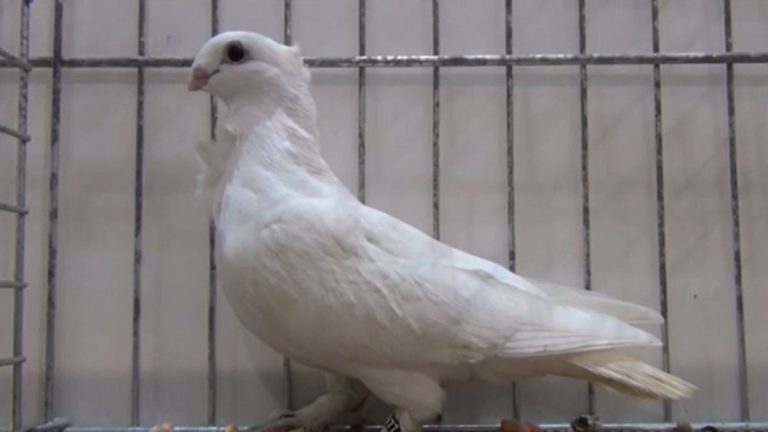Pigeon Training for Long-Distance Races: Enhancing Endurance and Mental Resilience
Are you ready to take your pigeon racing to the next level? In this article, I’ll share my expertise on pigeon training for long-distance races. As a seasoned pigeon trainer, I’ve witnessed firsthand the incredible potential these birds possess. With the right training techniques and strategies, you can transform your pigeons into formidable competitors in the world of long-distance racing. So, whether you’re a beginner or a seasoned racer looking to improve your results, keep reading to discover the secrets of successful pigeon training for long-distance races.
When it comes to long-distance pigeon racing, training is key. It’s not just about having fast and strong pigeons; it’s about developing their endurance, navigation skills, and mental resilience. In this article, I’ll share my tried-and-tested methods for training pigeons to excel in long-distance races. From building their stamina through regular exercise to honing their navigation abilities through strategic releases, I’ll cover all the essential aspects of pigeon training. So, if you’re ready to unlock the full potential of your racing pigeons, let’s dive into the world of training for long-distance races.
The Importance of Proper Pigeon Training for Long-Distance Races
As a seasoned pigeon trainer, I have come to understand the vital role that proper training plays in the success of long-distance races. Training pigeons for these demanding competitions goes beyond mere physical conditioning. It involves developing their endurance, navigation skills, and mental resilience. Without a solid foundation in these key areas, pigeons will struggle to compete in the fierce world of long-distance racing.
One of the first aspects of training that needs attention is building stamina. Pigeons need to be able to sustain flight for extended periods to cover the often hundreds of miles in these races. Regular exercise is crucial when it comes to building endurance. Through a series of progressive flights, pigeons gradually improve their stamina and ability to endure the challenges of long-distance races. By gradually increasing flight distances and durations, I help my pigeons build the necessary muscle strength and cardiovascular endurance.

But physical conditioning alone is not enough. Equally important is honing their navigation abilities. Pigeons must possess exceptional navigational skills to find their way back home, even when released hundreds of miles away in unfamiliar locations. This requires them to rely on a keen sense of direction, magnetic fields, sun position, and other environmental cues. To develop these abilities, I strategically release my pigeons from different locations and challenge them to find their way back to their loft. Through these intentional releases, pigeons learn to navigate and develop a strong homing instinct.
Mental resilience is also a critical component of successful long-distance racing. Pigeons must be able to withstand the physical and mental strain of racing for hours on end. They encounter unpredictable weather conditions, predatory threats, and stressful situations. To ensure their mental resilience, I gradually expose my pigeons to various stressors during training. This helps them develop the ability to remain focused, calm, and motivated, even in challenging situations.
Proper pigeon training is essential for long-distance races. By focusing on building stamina, honing navigation skills, and developing mental resilience, pigeons can become strong competitors in the world of long-distance racing. As an experienced trainer, I have seen firsthand the significant impact that comprehensive training has on pigeons’ performance and success in these demanding competitions.
Understanding the Physical and Mental Demands of Long-Distance Racing
When it comes to long-distance racing, pigeons face a unique set of challenges that require both physical and mental strength. As a seasoned pigeon trainer, I have come to understand the importance of preparing these birds for the rigorous demands they will encounter during these races. Through my years of experience, I have observed that comprehensive training is crucial for pigeons to become successful competitors in long-distance racing.

The Physical Demands
Long-distance racing puts significant strain on a pigeon’s body, requiring them to have exceptional endurance and stamina. These races can cover hundreds of miles, pushing their physical limits to the maximum. To prepare them for such challenges, I focus on building their stamina through regular exercise.
By gradually increasing their training distance and duration, I help pigeons develop the necessary muscle strength and cardiovascular fitness. This involves structured flying sessions that simulate the racing conditions, allowing the birds to build up their endurance over time. Additionally, I provide a balanced and nutritious diet to ensure they have the energy required for these grueling races.
The Mental Demands
In addition to physical fitness, long-distance racing demands strong mental resilience and sharp navigation skills. Pigeons must possess the ability to navigate accurately and efficiently over vast distances, relying on their innate homing instincts to find their way back to the loft.
To enhance their navigational abilities, I perform strategic releases during their training sessions. By gradually increasing the distance between their starting point and the loft, pigeons learn to recognize and navigate familiar routes. This allows them to develop a mental map and improve their homing skills.
Furthermore, I expose the pigeons to various weather conditions and environmental factors during their training to increase their adaptability and mental agility. This helps them deal with unexpected challenges they may encounter during long-distance races.
Understanding the physical and mental demands of long-distance racing is paramount when it comes to training pigeons for success. By focusing on building endurance, honing navigation skills, and nurturing mental resilience, trainers can prepare their pigeons to become strong competitors in these challenging events. Through my years of experience, I have seen the remarkable progress that pigeons can achieve with comprehensive training, ultimately transforming them into formidable contenders on the race course.
Building Endurance: The Foundation of Successful Pigeon Training
When it comes to training pigeons for long-distance races, building endurance is crucial. Endurance is what allows these birds to fly for hundreds of miles without tiring, making it a fundamental aspect of their training. In this section, I’ll discuss the importance of building endurance and how it sets the stage for a successful pigeon training program.
One of the key ways to build endurance in pigeons is through regular exercise. Just like human athletes, pigeons need to train their muscles and cardiovascular system to perform at their best. By gradually increasing the distance and duration of their flights, pigeons can develop the stamina required for long-distance races. It’s important to start with shorter flights and gradually increase the distance over time to avoid overexertion or injury.

In addition to exercise, a balanced diet plays a crucial role in building endurance. Pigeons need a diet rich in nutrients to fuel their bodies during prolonged flights. Providing them with a variety of grains, seeds, and fresh fruits and vegetables can help ensure they have the energy they need to fly long distances. Proper hydration is also essential, as pigeons can quickly become dehydrated during strenuous flights.
Furthermore, pigeons need mental endurance as well. They must be able to navigate and endure different weather conditions, challenging terrains, and unfamiliar surroundings. This is where strategic releases come into play. By gradually increasing the distance of their releases from their home loft, pigeons learn to adapt and navigate their way back. This strengthens their mental endurance, as well as their ability to find their way home even when faced with new and demanding circumstances.
Building endurance is the foundation of successful pigeon training for long-distance races. Through regular exercise, a balanced diet, and strategic releases, pigeons can develop the physical and mental stamina necessary to excel in these challenging competitions. By prioritizing endurance in their training programs, pigeon trainers can greatly increase the chances of success for their feathered competitors.
Enhancing Navigation Skills: The Key to Long-Distance Success
When it comes to pigeon training for long-distance races, developing strong navigation skills is crucial. Pigeons rely on their innate ability to navigate and adapt to different conditions while flying over vast distances.

1. Instincts and Homing Abilities: Pigeons have remarkable instincts and homing abilities that enable them to find their way back home from unfamiliar locations. These abilities are honed through training and experience, allowing pigeons to navigate through various terrains and weather conditions.
2. Strategic Releases: One effective method to enhance navigation skills is through strategic releases during training sessions. By gradually increasing the distance between the release point and the home loft, pigeons learn to rely on their internal compasses and navigate back home. This technique strengthens their sense of direction and sharpens their ability to navigate accurately.
3. Familiarization Training: Familiarization training plays a significant role in enhancing navigation skills in pigeons. By gradually introducing them to different release points, pigeons learn to recognize landmarks and create mental maps of their surroundings. This familiarity helps them navigate more confidently during races.
4. GPS Technology: In recent years, the use of GPS technology has become popular among pigeon trainers. GPS devices attached to pigeons provide valuable data on their flight paths, speed, and altitude. Analyzing this data helps trainers understand pigeons’ navigation patterns and make informed decisions to improve their training strategies.
5. Mental Endurance: Building mental endurance is equally crucial for pigeons to navigate successfully during long-distance races. Pigeons encounter numerous challenges, such as adverse weather conditions and unfamiliar territories. By training pigeons to remain focused and resilient, trainers enhance their ability to navigate when faced with unexpected obstacles.
Enhancing navigation skills is a key component of pigeon training for long-distance races. By relying on their instincts, utilizing strategic releases, familiarization training, leveraging GPS technology, and building mental endurance, trainers can help pigeons develop the navigation skills needed for success in these challenging races. With a strong navigation foundation, pigeons can overcome obstacles and reach their destination with precision and speed.
Mental Resilience: Training Pigeons to Stay Focused and Determined

When it comes to long-distance races, mental resilience is just as important as physical endurance for pigeons. As a trainer, I understand the importance of keeping these birds focused and determined throughout their journey. Here are a few strategies I’ve found effective in training pigeons to develop their mental resilience:
1. Consistent Training Routine: To build mental endurance in pigeons, it’s crucial to establish a regular training routine. By exposing them to various flight conditions and distances, they learn to adapt and stay alert even when faced with challenges. A structured training program helps pigeons develop the mental stamina they need to keep going during the race.
2. Exposure to External Stimuli: Like human athletes, pigeons need to be exposed to different environments and situations to train their mental resilience. By introducing them to various sounds, weather conditions, and race scenarios during their training, they become better prepared to handle unexpected challenges during the race. This exposure helps them stay focused and determined throughout the entire race.
3. Reinforcement of Positive Behaviors: Pigeons can be trained to stay focused and determined by reinforcing positive behaviors. When they exhibit behaviors that reflect mental resilience, such as staying on course and maintaining a steady pace, it’s important to reward them with praise or a treat. This positive reinforcement encourages them to continue displaying these behaviors and strengthens their mental endurance.
4. Visualization Techniques: Just like human athletes, pigeons can benefit from visualization techniques. As part of their training, I recommend creating simulated race scenarios and encouraging the pigeons to visualize their successful completion. This exercise helps boost their confidence, mental focus, and determination before the actual race.
By focusing on mental resilience during training, we can ensure that pigeons are equipped with the skills and mindset necessary to excel in long-distance races. Building a strong mental foundation in addition to physical stamina is key to their success. So, remember to incorporate these strategies into your training regimen to help your pigeons develop the mental resilience they need to soar to victory.
Conclusion
Building endurance is essential for pigeons participating in long-distance races. Regular exercise and a balanced diet are crucial for developing the physical stamina required for these races. Additionally, mental endurance plays a significant role in a pigeon’s success. Strategic releases and navigation skills, such as instincts, homing abilities, and the use of GPS technology, are vital for pigeons to navigate and adapt to different conditions during races. Training pigeons to stay focused and determined through consistent routines, exposure to external stimuli, reinforcement of positive behaviors, and visualization techniques enhances their mental resilience. By combining physical and mental training, pigeons can be equipped with the necessary skills and mindset to excel in long-distance races. So, whether you are a seasoned pigeon trainer or a beginner, focusing on endurance and resilience will help your pigeons soar to victory in these challenging races.







